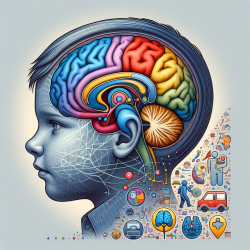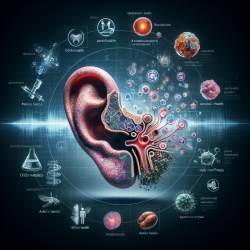Key Findings
The study analyzed the relationship between autism spectrum disorder (ASD) symptoms and the volume of the caudate nucleus, a brain structure involved in executive function and reward processing. Here are the main takeaways:- Participants with ADHD exhibited significantly higher ASD-like symptoms compared to typically developing controls and unaffected siblings.
- A smaller left caudate nucleus volume was associated with more severe ASD-like symptoms.
- The interaction between the left caudate nucleus and the left globus pallidus (another brain structure) was a critical predictor of ASD-like symptoms.
Implications for Practitioners
Understanding these findings can help practitioners make data-driven decisions to improve outcomes for children with ADHD and ASD-like symptoms. Here are some actionable steps:- Personalized Interventions: Tailor therapeutic approaches based on individual brain structure profiles. For example, children with smaller caudate nucleus volumes may benefit from interventions that enhance executive function and reward processing.
- Early Identification: Use brain imaging as a tool for early identification of children at risk for severe ASD-like symptoms, enabling earlier and more targeted interventions.
- Multidisciplinary Approach: Collaborate with neurologists, psychologists, and other healthcare professionals to develop comprehensive treatment plans that address both ADHD and ASD-like symptoms.
Encouraging Further Research
While this study provides valuable insights, it also highlights the need for further research. Practitioners are encouraged to:- Explore Longitudinal Studies: Investigate how changes in brain structure over time impact the severity of ASD-like symptoms in children with ADHD.
- Examine Additional Brain Structures: Study the role of other brain regions, such as the amygdala and hippocampus, in predicting ASD-like symptoms.
- Investigate Therapeutic Outcomes: Conduct research to determine how different therapeutic interventions impact brain structure and ASD-like symptoms.
Conclusion
This study underscores the importance of understanding the neurological underpinnings of ADHD and ASD-like symptoms. By leveraging these insights, practitioners can develop more effective, personalized interventions that improve outcomes for children.To read the original research paper, please follow this link: Decreased Left Caudate Volume Is Associated with Increased Severity of Autistic-Like Symptoms in a Cohort of ADHD Patients and Their Unaffected Siblings.










